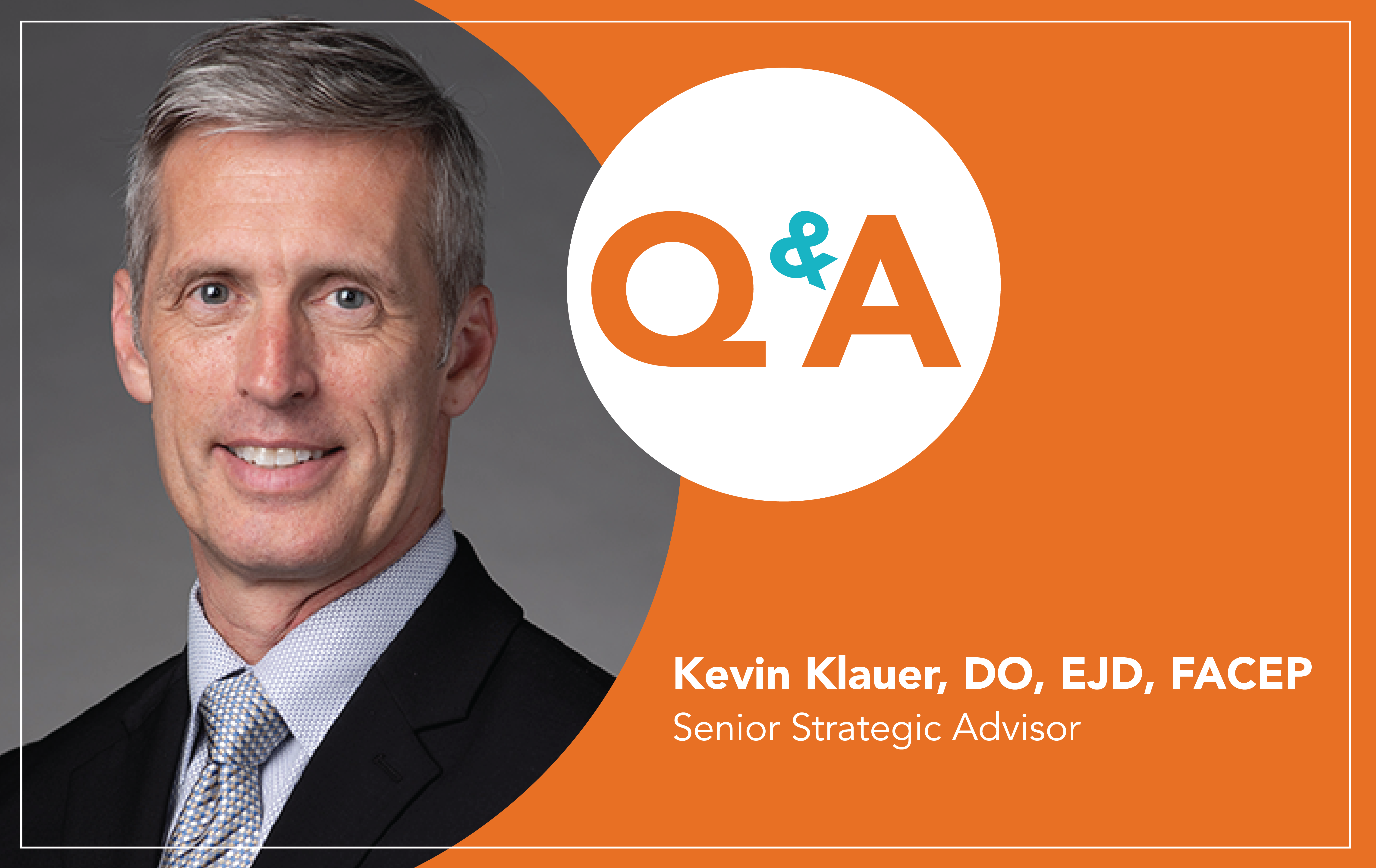At the end of last year, Dr. Kevin Klauer, DO, EJD, FACEP was announced as the new Chief Executive Officer of the American Health Information Management Association (AHIMA). Per the AHIMA’s press release, Dr. Klauer’s leadership will help bring the organization “into a future of growth and innovation.”
When it comes to medicine, Dr. Klauer has always had a forward-facing eye. Earlier last year, he sat down with AMOpportunities’ Vice President of Clinical Education, Dr. Ryan Palmer, to discuss innovating around the barriers schools face in clinical education.
Earlier this month, Dr. Klauer again joined AMO for a short Q&A where he shares more about his new role with the AHIMA and discusses opportunities for clinical education in 2024.
Near the end of last year, the AHIMA announced you as their new CEO. How have you enjoyed this role so far and what are some of your goals for this new role?
I am both honored and excited to have been selected for and entrusted with this important role. The health information management community serves a critical and vital role in the nation’s healthcare system. I’m inspired by the mission, “Empowering people to impact health.” Supporting the profession in the pursuit of transforming healthcare through safe, secure and high-quality data to ensure health equity and enhance clinical outcomes is a worthy pursuit that I’m proud to be a part of.
As you come up on a year as AMO’s Senior Advisor for Strategic Partnerships, could you share a little bit about your work over the past year–what you have already been working on, and what are some things on your horizon in 2024?
Helping really smart people to bring a landscape changing solution to those who may need it has been a true pleasure. With great investment of time, energy and resources, the value of such work and outcome of our efforts seems intuitive. However, what has taken countless hours and years to create with the expenditure of intellectual capital and sweat equity may not always be easily understood by those less familiar with our work.
One of the most rewarding aspects of my work with AMO has been to assist with the repositioning and reconfiguration of the messaging to those being introduced to AMOpportunities. Most people expect the cost of a solution to approximate its value. Clearly and concisely defining the value proposition of this solution for educators and others has been an obstacle, if not a barrier, to deploying this solution in the service of others. In other words, when something sounds too good to be true, many become skeptical. Well, AMO isn’t too good to be true, but it is an excellent solution that can and will expand clinical educational offerings to students, while off-loading the administrative burden on educators at no cost. The no cost message is an important one. Educators currently have a budget for student rotations. Thus, using those very same dollars in a more effective and efficient way with a partner like AMO makes all the sense in the world. As a matter of fact, the “pay as you go” model offers a “no risk” opportunity to either enhance current rotations or outsource this entire function with no new cost. It costs nothing to be a partner. The existing budgeted dollars for clinical rotations are utilized when, and if, a desirable rotation or set of rotations is identified in our system.
What are some of the biggest barriers you see DO, and even medical schools in general, face when it comes to clinical education?
Medical educators are amazing at what they do, educating and training the nation’s future physicians. However, in most cases, institutional resources are finite. Taking valuable time from administrators and educators to manage rotations may be a distraction to the core mission, when a credible and reliable partner like AMO exists. In addition, we can help to streamline these processes, which often offers economization of this process making it less expensive.
Finally, medical students are educational consumers. It is not inexpensive to obtain a medical education and thus, students have expectations. AMO can be instrumental in making certain that the final years of medical school, clinical rotations, are as valuable to the student as the non-clinical educational years. Many institutions encounter challenges in meeting the expectations of their students in this regard. AMO is ready to assist and will aid in preserving the value of the high-quality education received in the non-clinical years by making certain diverse and high-quality clinical rotations are available in sufficient quantity to meet students’ needs and interests.
What advice would you give to DO schools that are navigating pre-accreditation stage?
Taking on the role of Founding Dean is a wonderful honor and very exciting. Along with the Dean, many will commit their time, energy and resources to offer the highest-quality educational experience possible. Certainly, meeting the necessary requirements in the pre-accreditation/application stage is no easy task. However, executing on the mission and administering the operational and educational plan for the institution has its foreseen and unforeseen challenges.
One challenge, faced by most institutions, is the ability to maintain enough high-quality clinical rotations with sufficient clinical and geographic diversity to anticipate, meet and even exceed accreditation requirements and learner expectations.
Having a reliable partner to ensure the consistency of clinical education may ensure program stability, while allowing educators and educational administrators to focus their time and energy on other very important aspects of their educational programs. A partnership with AMO strengthens an institution’s ability to deliver and execute on their mission.
And finally, what advice would you give to established medical schools that have hesitancy around adopting a new approach to clinical training?
I would suggest considering the risk and rewards balance approach. AMO will certainly speak to the value of a partnership. We will ask that institutions trust and verify that the stated and promised value is real and consistent. What risks are associated with the trust and verify approach? Absolutely none.
There is no new expense, and there is no loss of control by the institution. Such a partnership that can only benefit an institution and cannot possibly cause any harm, is worth considering.







Leave A Comment